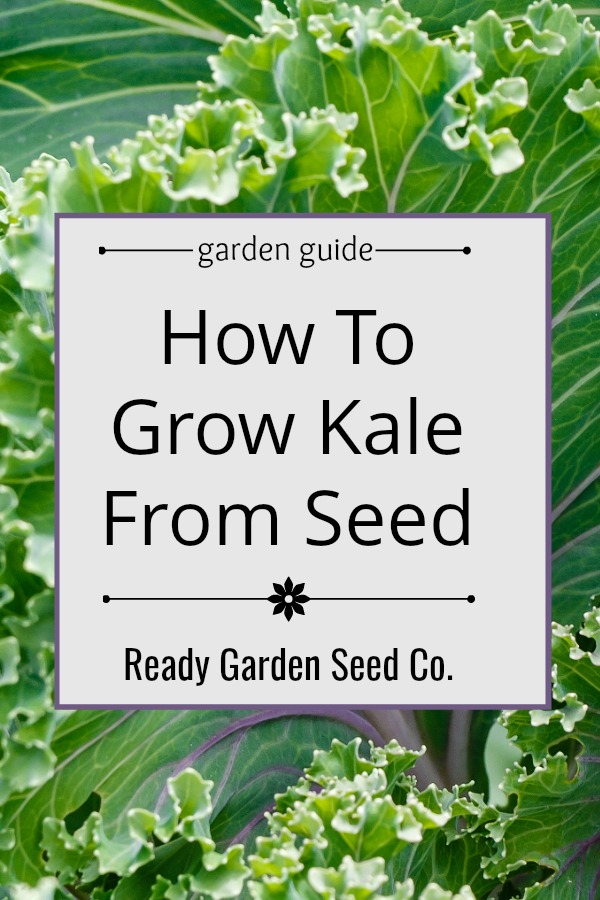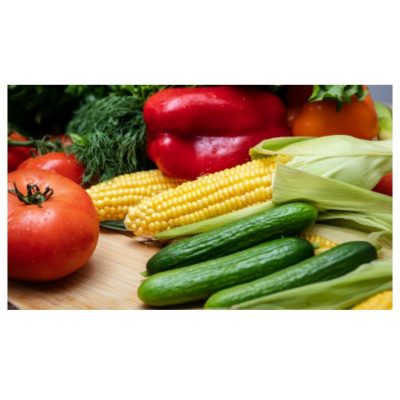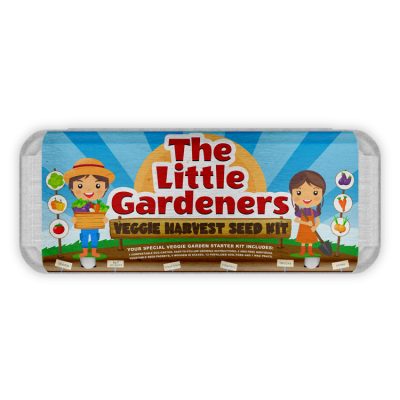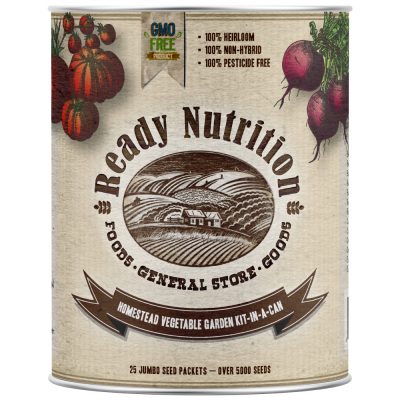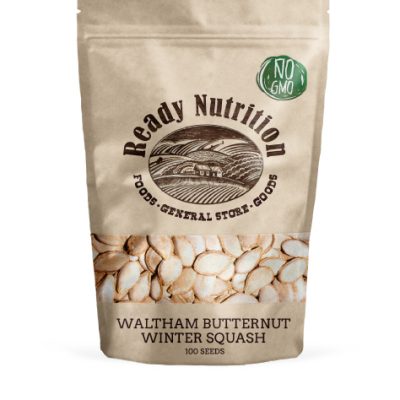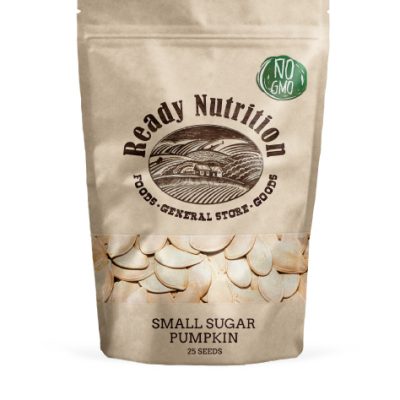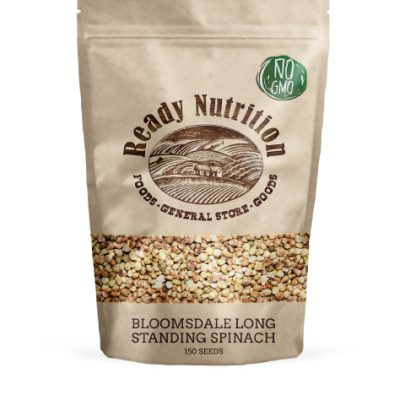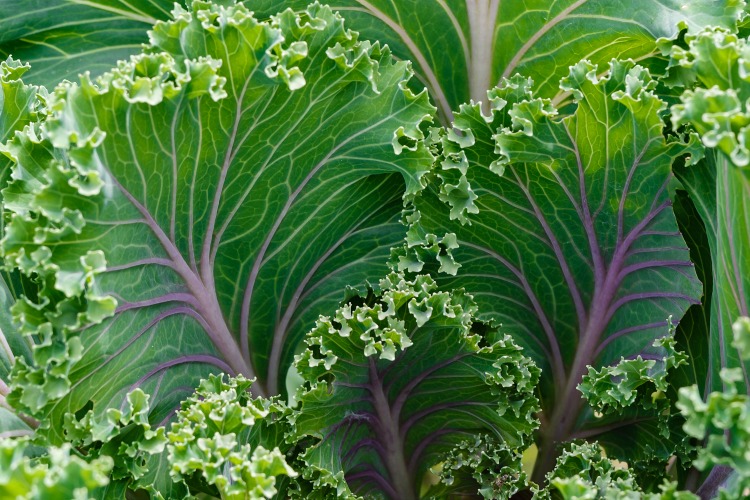
Red Russian kale is a low-calorie, low-carb, and low-fat, leafy green. You can add it to salads, smoothies, soups, or stir-fry to boost the nutritional content of your meal. Red Russian Kale packs a powerful punch of protein and antioxidants. Just one serving provides a day’s worth of vitamin A and vitamin C and eating it regularly promotes eye health and reduces your risk of cancer.
Fun Fact: Red Russian kale originated in Siberia and made its way to North America via traders in the late 1800s. Red Russian kale has grey-green leaves that turn purple when the weather cools off.
If you are interested in growing some red Russian kale in your garden, you won’t be disappointed! The robust flavor of Ready Nutrition’s red Russian kale is not overpowering, and the entire plant, including the stems, can be eaten! Kale is a hardy, cool-season green that is a part of the cabbage family. It grows best in the spring and fall and can tolerate those early fall frosts. In fact, the flavor of kale improves after it undergoes a frost making it an excellent crop for those in more northern climates.
PLANTING
- You can actually plant kale at any time from early spring to early summer. If you plant kale late in the summer, you can harvest it in the fall until the ground freezes over in winter.
- To prepare the soil, mix 1 1/2 cups of 5-10-10 fertilizer per 25 feet of row into the top 3 to 4 inches of soil.
- Plant the seeds 1/4 to 1/2 inch deep in well-drained, light soil.
- After about 2 weeks, thin the seedlings so that they are spaced 8 to 12 inches apart.
- Water the plants regularly, but be sure not to over water them.
- Mulch the soil heavily after the first hard freeze; the plants may continue to produce leaves throughout the winter.
TROUBLESHOOTING
- Cabbageworms – a common pest for cabbage, kale, cauliflower, broccoli, and other members of the cabbage vegetable family. Try spraying with Bt (Bacillus thuringiensis var. kurstaki) every 1 to 2 weeks. It will help control cabbage family pests. Sevin also is effective. And, the few pests that remain on the vegetables can be washed out after harvest using water and a small amount of detergent or other surfactants. According to The Almanac, you can also try to dampen cabbage leaves then sprinkle them with cornmeal. The caterpillars will eat the meal, swell, and die.
- Flea beetles – These beetles are small and shiny, with large rear legs. New leaves are usually damaged first, and they will have a lacy appearance after being eaten by a flea beetle. Flea beetles usually don’t cause fatal damage to established plants because the leaves are too large. The real danger is that they can spread bacterial diseases, such as wilt and blight, from plant to plant. Try a homemade spray to control flea beetles: 2 cups rubbing alcohol, 5 cups water, and 1 tablespoon liquid soap. Test out the mixture on a leaf of the plant, let it sit overnight, then spray the rest of the plant if you don’t notice any adverse effects. Spray the mixture on the foliage of garden plants that are susceptible to these pests.
- Aphids- small, soft-bodied insects that can survive in almost any zone. Aphids multiply quickly, so it’s important to get them under control before reproduction starts. Beneficial insects, such as lady beetles, lacewings, and parasitic wasps, will feed on aphids, so purchase some online or locally for your garden before you get the aphids. If you already have them, however, try spraying cold water on the leaves; sometimes all aphids need is a cool blast to dislodge them. Typically they are unable to find their way back to the same plant. If you have a large aphid invasion, dust plants with flour. It constipates the pests.
HARVESTING & STORAGE
Kale is ready to harvest when the leaves are about the size of your hand. Remember, kale will continue growing until it’s 20 degrees Fahrenheit and it tastes even sweeter with a touch of frost. The small, tender leaves can be eaten uncooked and used in salads. Cut and cook the larger leaves but be sure to remove the tough ribs before cooking. You can store kale as you would any other leafy green by putting the kale in a plastic bag and keeping it in the refrigerator. It should last about 1 week.
BONUS KID ACTIVITY:
After you’ve harvested some kale and you have some fresh or frozen available, freeze a few bananas. Grab a handful of blueberries, huckleberries, or serviceberries and let your kids pick some other ingredients for a nutrient-dense green smoothie! Almond milk is an excellent choice. They love being involved and with the addition of a frozen banana and some berries, the kids won’t taste much, if any of the kale in their treat. Try adding other things from the garden too! If your child suggests tossing in a carrot, why not give it a try? Getting kids excited about vegetables, gardening, and healthy eating is possible and can be a lot of fun!
